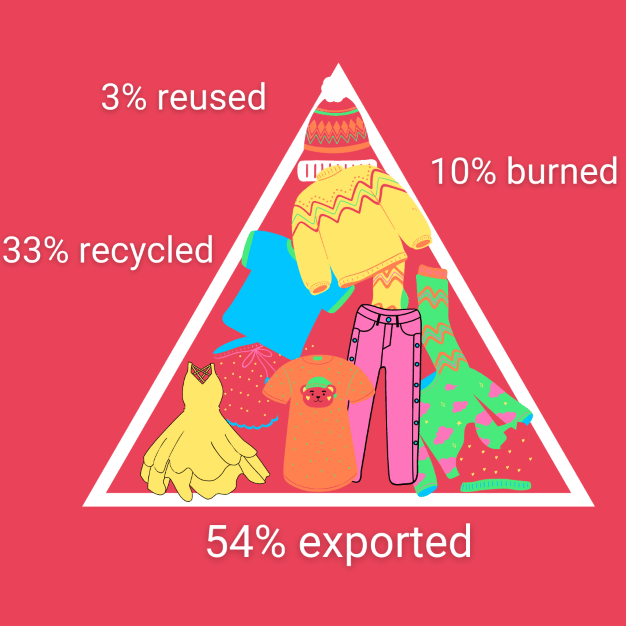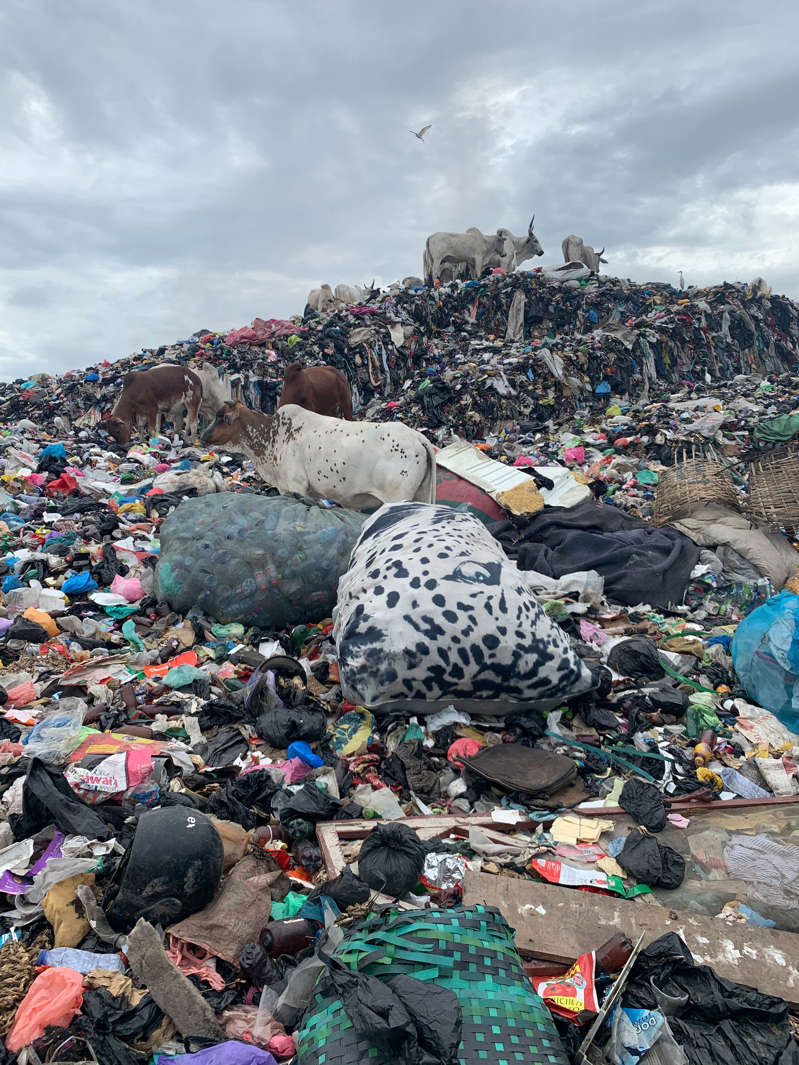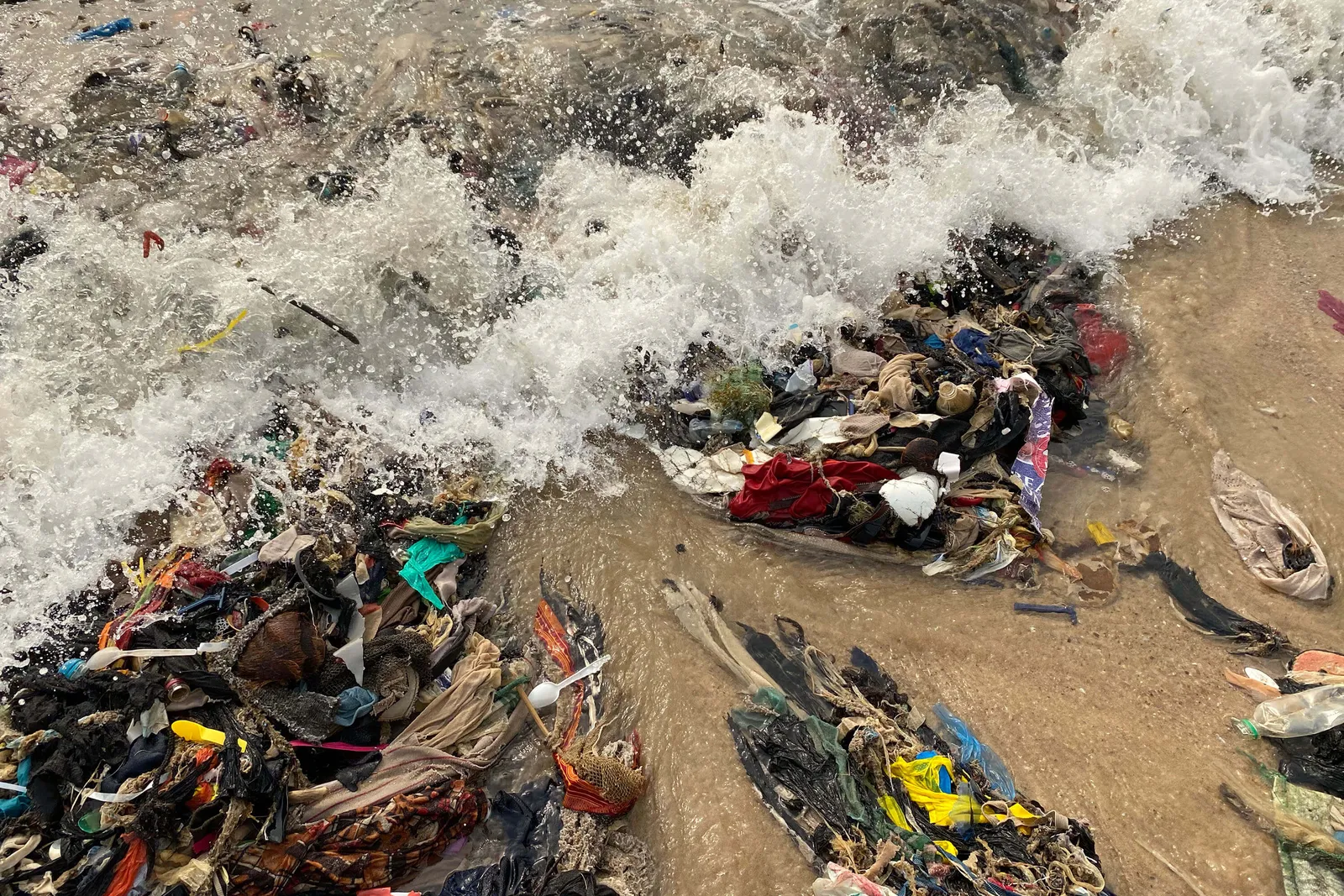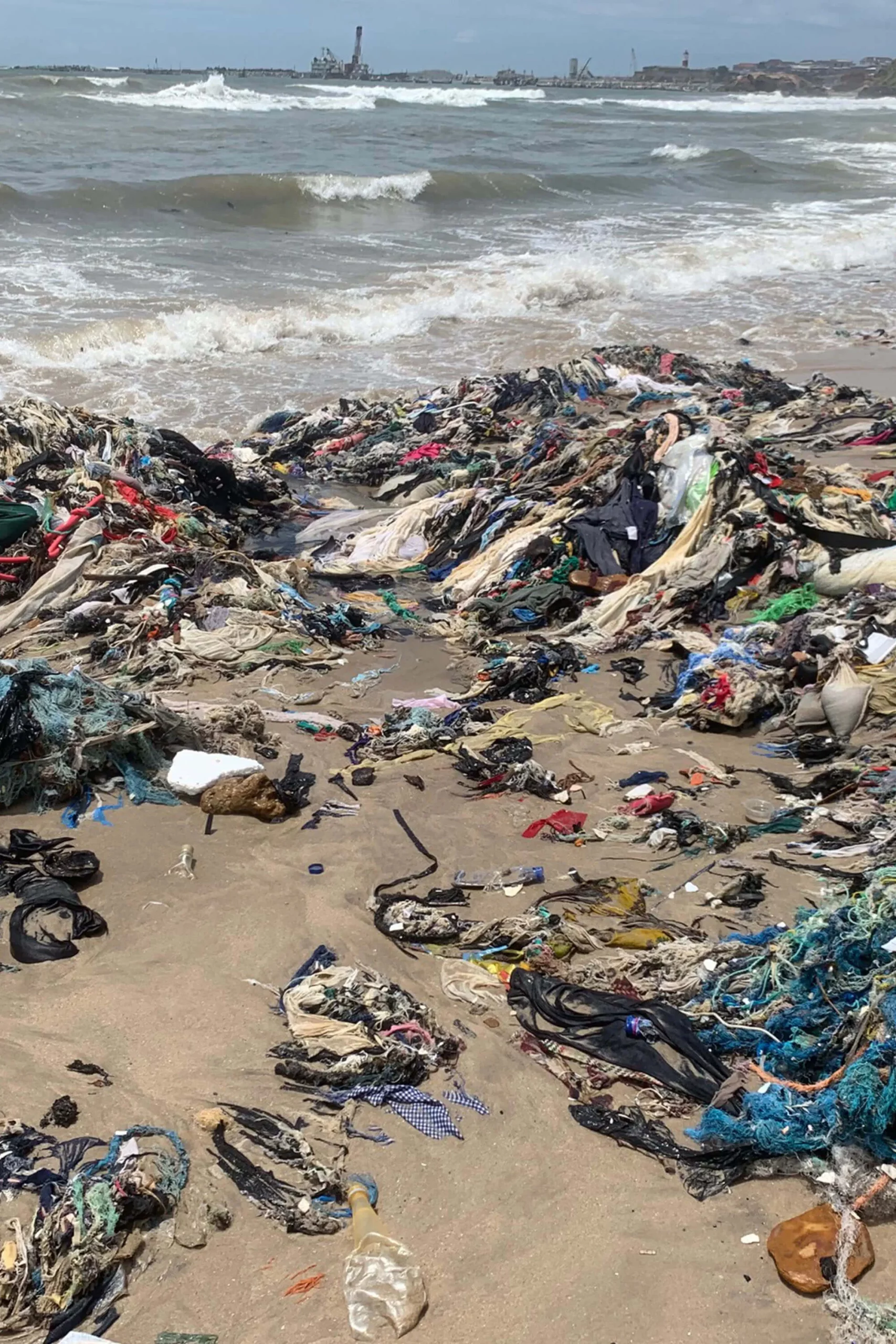What’s the big deal?
What’s the issue with fast fashion?
Fast fashion in on the rise. Compared to 20 years ago, we produce 400% more clothing than before. 80 billion garments are produced every year. This fact alone poses a huge ecological problem. But what happens with all the clothes that have already been produced? After wearing a garment only 7 times, the average consumer throws it away. The average Swiss person throws away 6.3kg of clothes per year. And where does it all go?

Only 3% of donated clothes are actually reused. 54% are exported, mostly to Africa. In 2019, 185’000 tonnes of clothes were exported to Kenya alone. 40% of those imported clothes are thrown away and pile up on landfills. Is it fair to turn Africa’s beautiful beaches into a garbage disposal? How can we stop this from happening?
Is second hand a solution?
How can we get rid of clothes sustainably?
Selling fast fashion isn’t profitable for regular second hand stores. The garments are way too cheap to be resold. Selling online on platforms such as Facebook marketplace or Instagram is tricky for inexperienced users. It’s not easy to find customers and arrange a meeting.
Consumers’ perspective
Shopping in regular second hand stores is very different from the shopping experience young people are used to. It’s not easy to find the right size and something trendy.
Shopping online is an option, but it’s often not the most sustainable solution. It doesn’t help out local stores and uses a lot of transportation. Plus, a lot of second hand apps don’t deliver to Switzerland and, if they do, shipping often costs more than the garment itself.


